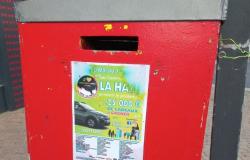This Thursday morning, algorithms are helping visually impaired people.
With a project called Biped born in 2021 in Lausanne from the mind of its two co-founders, Mael Fabien and Bruno Vollmer, Mael Fabien who is Breton. One day these two come across a visually impaired person who, to cross the pedestrian crossing, makes a video call to a friend on his smartphone, a friend who gives him directions on the obstacles to avoid using the smartphone camera. This is where the idea of creating technology to facilitate the inclusion of people with disabilities was born. Mael Fabien did his thesis on artificial intelligence, and he will use it in this project.
How did they translate this observation, this capture, into invention?
The initial idea is to develop a co-pilot inspired by this video call, but also autonomous vehicles, a device capable of reading text, recognizing scenery, faces, detecting sidewalks, passages for specific pedestrians and to provide navigation for visually impaired people with sound. To do this, they relied on feedback from a hospital ophthalmic department in order to integrate the real needs of visually impaired people.
They then prototyped Biped which looks like a small harness, it’s like a short leather scarf that stops at chest height. It weighs less than a kilo, and it has cameras on the left of the chest, a battery behind the neck and a small computer on the right, a computer which analyzes images using artificial intelligence. Basically, we have a Tesla on our shoulder, but smaller. The on-board object recognition model is capable of identifying moving or stationary obstacles in order to alert the owner and predict the risk of collision.
Exactly, how does he warn the visually impaired person?
The harness transmits spatialized sound alerts, via a small Bluetooth wireless headset, which means that it allows the visually impaired person to locate the obstacle in space as well as the distance that separates it from it depending on the power and the position of the sound.
In the future, the founders of Biped hope that their technology will be able to help users run or help them in public places: train stations, airports, public transport, why not supermarkets in order to help further more visually impaired people on a daily basis. An award-winning device at the last Consumer Electronics Show (CES) in Las Vegas, the major consumer electronics show.






